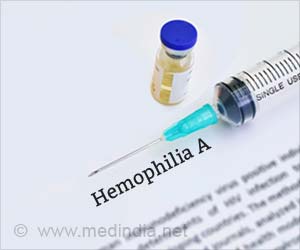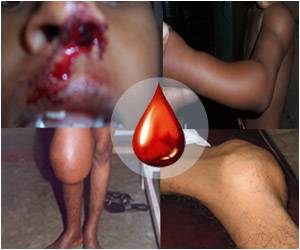Highlights:
- World Hemophilia Day is observed worldwide on the 17th April to raise awareness about this little known inherited bleeding disorder and ensure treatment is available to every patient across the world
- Hemophilia is an inherited condition marked by prolonged potentially life-threatening bleeding following even minor trauma. It is a rare condition and about 400000 persons are estimated to be affected worldwide
- World Hemophilia Day 2019 aims to reach out as far and wide as possible to ensure proper diagnosis and treatment to nearly 75 percent of patients who still remain undiagnosed or don’t have access to treatment
Read More..
History of World Hemophilia Day
The first hemophilia awareness day was first established in 1989 and is sponsored by the World Federation of Hemophilia (WFH). The organization was founded by Frank Schnabel, and the date 17th April was chosen as his birthday falls on this day. The awareness color for hemophilia has been aptly chosen as red color. The World Federation of Hemophilia (WFH) was founded in 1963 and has partner organizations in about 140 countries and is officially recognized by the World Health Organization.WFH has consistently been crusading for over 50 years to improve diagnosis and availability of treatment resources for persons with inherited bleeding disorders such as hemophilia, von Willebrand disease ,inherited platelet disorders and rare clotting factor deficiencies.
Why Should We Raise Hemophilia Awareness?
- Many people in the world are unaware of their condition and thus remain undiagnosed or have no access to proper treatment for bleeding disorders such as hemophilia
- As per WFH estimates, about 1 in every 1000 person has a bleeding disorder and many don’t get treatment
- If not treated properly and in a timely manner, severe cases of hemophilia can end in premature death. Fortunately, effective treatment options are there and if provided, people with hemophilia can lead healthy and productive lives
How We Can Raise Awareness About Hemophilia
We should all do our bit to raise awareness about hemophilia and related bleeding disorders so that each and every patient is diagnosed and receives appropriate treatment. Some of the ways to do this include the following:- Download World Hemophilia Day posters from the WFH site and share widely on social media such as Facebook and Twitter
- Persons with hemophilia can share their stories on social media and raise awareness as well as inspire others with the condition
- Distribute information leaflets on hemophilia to the public in prominent locations in the community such as parks, libraries and malls
- Raise funds to support hemophilia research and/or make a personal contribution to the campaign
- Print and visual media should provide wide coverage about the condition and invite experts to discuss the condition and its diagnosis and treatment
- Clinics and hospitals should offer free screening and check-ups to encourage more persons to seek diagnosis and treatment
- Wear red or light up your office space or building in red to show solidarity for the hemophilia awareness campaign
- Sell red themed stuff such as mugs, bracelets, T-shirts, pins and other trinkets online and donate the proceeds to support the campaign
- Organize walkathons or marathons to raise awareness about hemophilia and raise funds
Fast Facts About Hemophilia
- Hemophilia Nearly 70 percent of patients remain undiagnosed or don’t have access to treatment
- It is not contagious and does not spread from one person to another
- Hemophiliacs are deficient in a protein that is necessary for blood to clot following injury. As a result, clotting of blood is delayed and they bleed considerably even following trivial injuries
- Careful precautions must be taken before procedures such as dental extraction or surgical operations to avoid the risk of bleeding
- At times bleeding can occur internally especially within joints and muscles causing severe pain and swelling
- There are two types of hemophilia, namely Hemophilia A where clotting factor VIII is deficient and the less common Hemophilia B where clotting factor IX is deficient
- It is estimated that 1 in 5000-10,000 persons in the US are born with this condition
- The condition is diagnosed by measuring the levels of these clotting factors in the blood
- Treatment is by transfusion of pooled plasma from blood donors rich in Factor VIII and Factor IX factors
- The pooled plasma should be tested for blood-borne infections such as HIV and Hepatitis B before transfusing since hemophiliacs are at risk of developing these infections due to the need for regular transfusions
Summary
World Hemophilia Day is observed on the 17th April and aims to raise awareness about this rare potentially life-threatening bleeding disorder and ensure that the majority of patients who still remain undiagnosed and untreated get diagnosed and access to treatment.References:
- World Hemophilia Day 2019 - (https://www.wfh.org/en/whd)
- World hemophilia day 2019- outreach & identification - (https://www.worldhemophiliaday.org/)
- Fast Facts About Bleeding Disorders - (https://www.hemophilia.org/About-Us/Fast-Facts)
Source-Medindia














